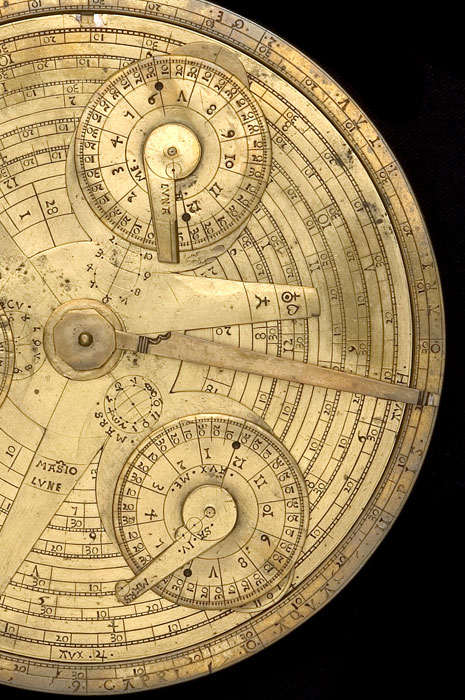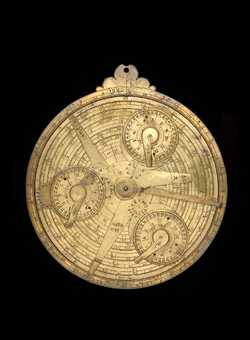The planets
The astrolabe generally deals with the positions of the sun and prominent stars. The motions of the planets are much more complicated, but this instrument has the extremely rare addition of an 'equatorium' on the reverse, that is an instrument for calculating the positions of the planets using the techniques of Ptolemy's book Almagest. The three prominent discs reflect the 'epicycles' used by Ptolemy. They are adjustable so that one can be used for the 'inferior' planets (i.e. 'beneath' the sun, namely Mercury and Venus) and one for the 'superior' planets ('above' the sun: Mars, Jupiter and Saturn). The third disc is for the moon ('LVNA'), which is considered a planet in Ptolemaic astronomy.


Astrolabe and Equatorium, southern France or Italy, late 15th century (Inv. 49847)



